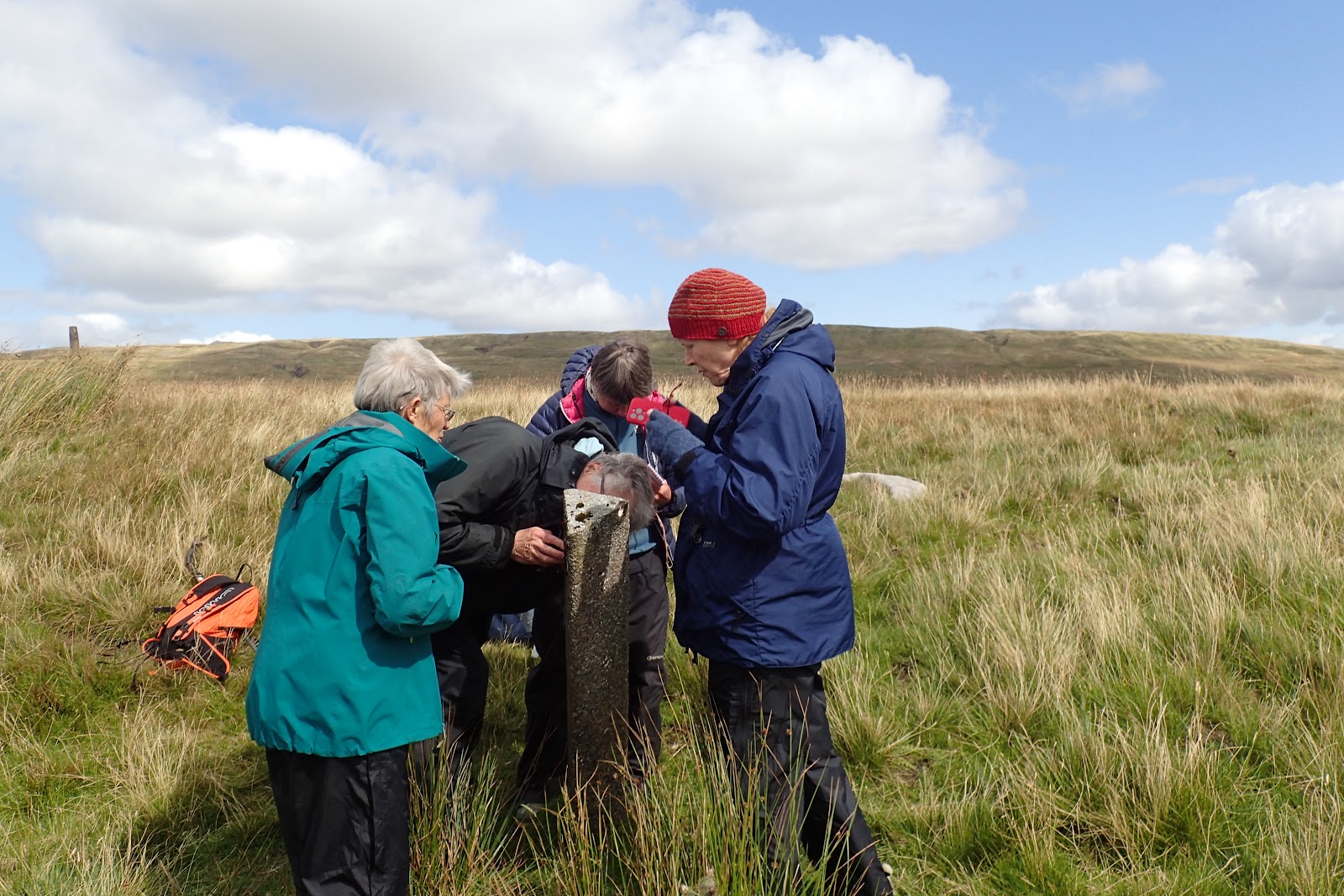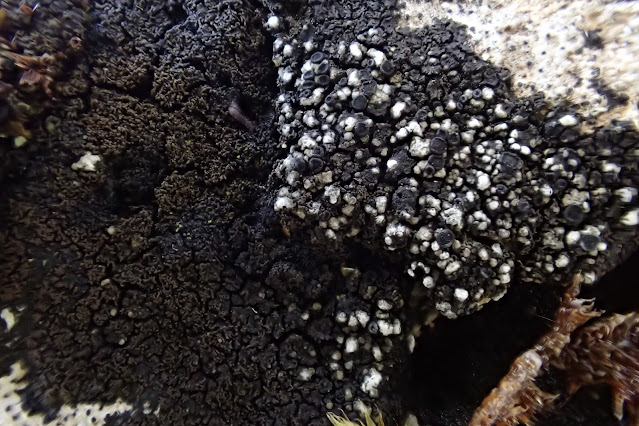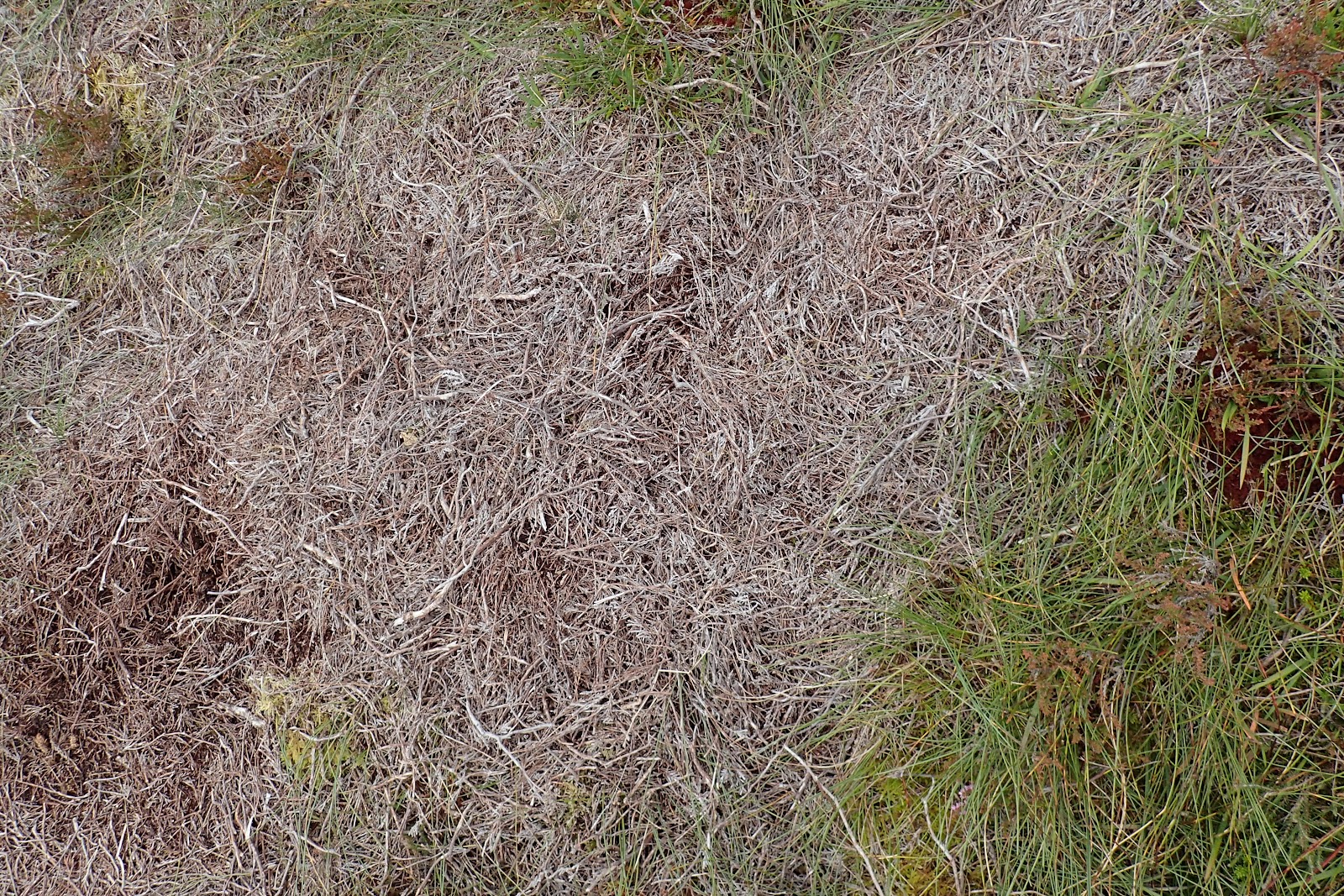On 24 August 2024 I joined the Cumbria Lichens and Bryophytes group at NY8115004105 on the B6270 at 506m above sea-level at the County boundary -
 |
| The lichens sub group at the boundary between Cumbria and Yorkshire. there were also four bryologists. |
on the road joining Nateby (Kirby Stephen) in the Eden Valley (Cumbria) to the top of Swaledale (Yorkshire).
The wiggly road that goes up Swaledale past Thwaite and Keld and beyond to the summit at c 506m from where it then descends steeply into the Eden valley to Nateby and Kirby Stephen.We were at the point more or less where the foopath from the top of Mallerstang Edge crosses this road to get to Nine Standards Rigg to the north. (I have memories of practising for the fells man c 35 years ago.). This is 35 miles from my home and Google maps said it would take 1 hour 8 minutes. (It said the same time or a couple of minutes longer for the route via the M6 51 miles)
Black Roses
The new lichen for the day for me was Sagiolechia protuberans found on the top surface of some flat low limestone pavement blocks, right next to the bog..
Pete has named it "Black Roses"
The black apothecia are small - but very distinctive: Found simultaneously by Chris and Pete.. but we had to wait for Caz to turn up and give it a name.
The thallus is immersed in the rock but can give the rock a pinkish orangish hue. The apothecia stand proud of the rock and look a bit gyrose. LGBI2 says: "The black star shaped apothecia with a sterile central cone are diagnostic."
 |
| Looking at Sagiolechia protuberans |
 |
One of the first things we had noticed on the clint - were the balck patches of Placynthium nigrum (left), and its the parasite Toniniopsis verrucarioides (top right) |
We also found about four species of Peltigera on the turf semi-overlapping this clint, including Peltigera canina.
The 9.30 start had been put back to 12 midday for some of us and to 1.30pm for the rest because heavy rain had been forecast in the morning - (and we were pleased to miss it). I think we found the only dry 5 hours of the weekend.
We started looking at the bog/wet heath.
 |
| Interesting fungus |
The part near the road was higher, drier and had some heather in flower. And had this interesting unnamed Fungus above. But we walked to where there were peat hags and low wet areas. We looked on the side of the peat cliffs
 |
| Campylopus introflexus (Heath Star-moss) - v common on tree stumps, and peat (invasive from Australia first seen in UK in 1941) and Cladonia ramulosa - pale chocolate coloured blobs. The blobs swell up when wet. |
 |
| The Sphagnum tenellum see BBS description is at the foot of the peat bank, lower part of this picture - (above it is Sphagnum subnitens. ) Look for a small, delicate Sphagnum with small concave leaves (making the plants looked beaded) and undifferentiated spreading and pendent branches. At the tips of some branches the two small uppermost leaves diverge widely, giving them a ‘birds beak’ or ‘crab’s claw’ appearance BBS Occurs on acidic, bare, peaty ground, especially frequent in small hollows on bogs.
Also on wet heaths and on well-drained, but very humid, heathery slopes in districts
with high rainfall. |
We returned to the cars to meet the others who came at 1.30pm. We looked at a few cement posts at the car park to record additional species.
 |
The Physcia caesia was fruiting profusely.
There was this lichen with black rimmed black apothecia.
 |
| Physcia caesia (right), Caloplaca holocarpa sens lat centre (we think) |
After lunch,
Back north west on the wet heath/bog again, we found an area where "Peat Restoration" work had taken pace. There were little dams blocking up the channels. Harder to understand was the spreading of heather stems on the ground. Had the workers smoothed out the steep banks (where we were finding interesting species)? And covered covering the smoothed banks with the heather stalks.. Leading to a much more boring habitat w.r.t. lichens (and mosses?)
 |
| Heather stems spread on the ground |
 |
| Heather stems spread on the ground |
 |
| Smoothed banks. |
We did find some Cladonia digitata.
 |
| Cladonia digitata - the only (or main) red Cladonia that can have cups. The underside of the squamules are sorediate (white powdey). It is a grey-green (not yellow green) Cladonia. |
We left the wet heath and came to the limestone pavement area.
 |
| Diploschistes muscorum on moss and it had formerly been growing on Cladonia) on limestone pavement surface. It was near here we saw the Sagiolechia protuberans mentioned at the beginning. |
Between the peat bog area and the Limestone pavement are was a row of "Buttertubs" - Acid water draining from the peat had dissolved deep holes between the clints.
 |
| Chris led us half way down one of these to see some rock ledges with Solorina saccata |
Outside the fenced off "Buttertubs" area I found a shining bright green 6cm tuft of a moss growing on top of a hummock of Polytrichum strictum. We think it is Tetraplodon mnioides. This grows on scats of carnivores left on top of hummocks of moss or rocks. Its leaves have long curly hair points. (Splachnum moss has shorter hairpoints)
 |
| Tetraplodon mnioides - Slender Cruet-moss |
 |
| Clare (mosses) and I walked back to the cars. I had been busy photographing other people but had none of myself. So I asked her to take a photograph of me looking at the sandstone slab on the YRNP sign. She was in Cumbria and I am standing in Yorkshire with the start of Swaledale behind me. |













No comments:
Post a Comment